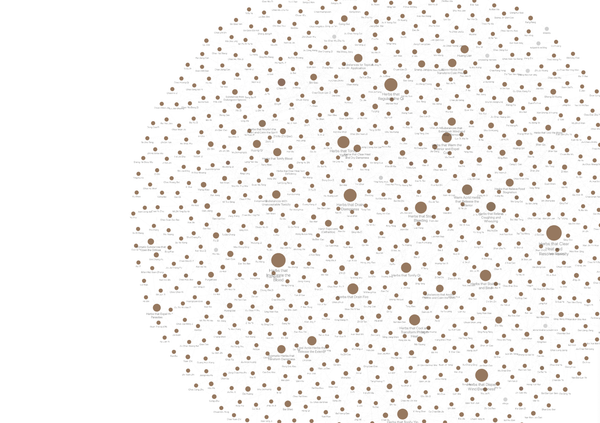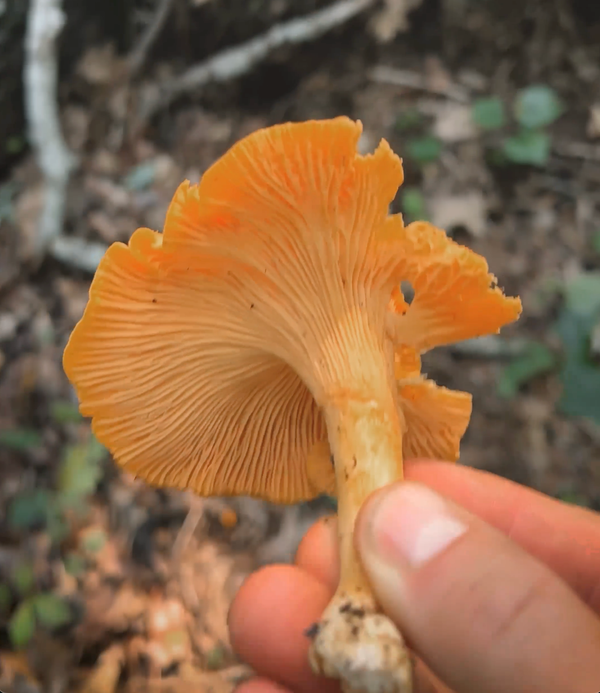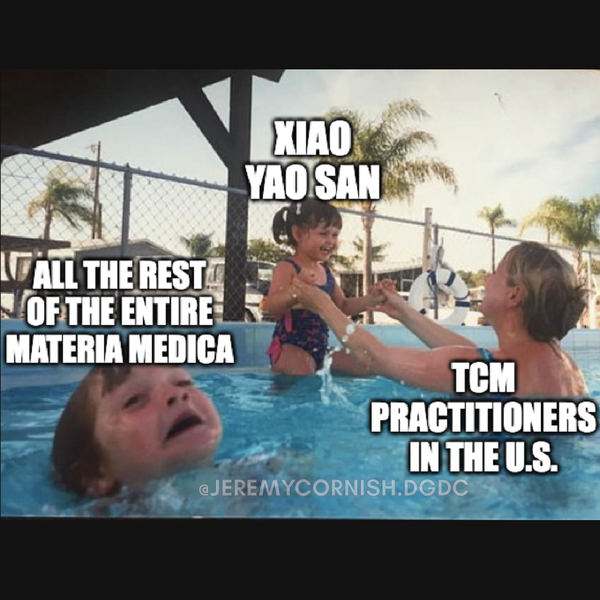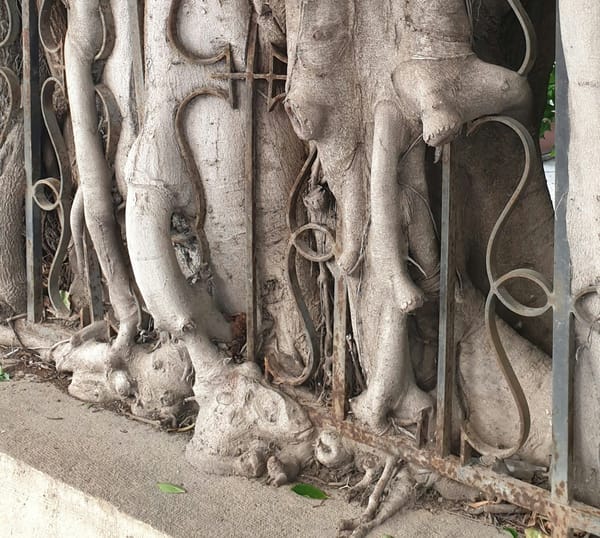The Best Way to Treat Dampness: Dry it? Drain it? Transform it?

Many patients with dampness wind up in vicious cycles with mixed patterns and conflicting symptoms. For example, a common sign of dampness is "thirst for sips" or "thirst with no desire to drink."
WTF is going on here?
When a patient has pathological fluids (dampness) in some areas of the body, other areas will be relatively dehydrated. The fluids are not in the cells where they're supposed to be- they're piling up somewhere else.
There will be dampness in some places, yet dehydration (dryness) in others.
The thirst sensation comes from the relative dehydration, but because the patient's body is soggy and encumbered they're repulsed by the thought of actually drinking the water (or having a nourishing bowl of soup).
Dampness is a paradox. Like any paradox, we need to help our patients reconcile the conflict so that they can get better.
*Note: In terms of treating dampness gracefully we must be aware of underlying deficiencies such as Blood or Yin Deficiency. Thinking systematically, if we dry the dampness too vigorously we can inadvertently trash the Blood, Yin, or other healthy fluids.
Likewise if there's Damp Heat, we must be aware of the risks of bitter, cold herbs affecting an already weakened Spleen Qi.
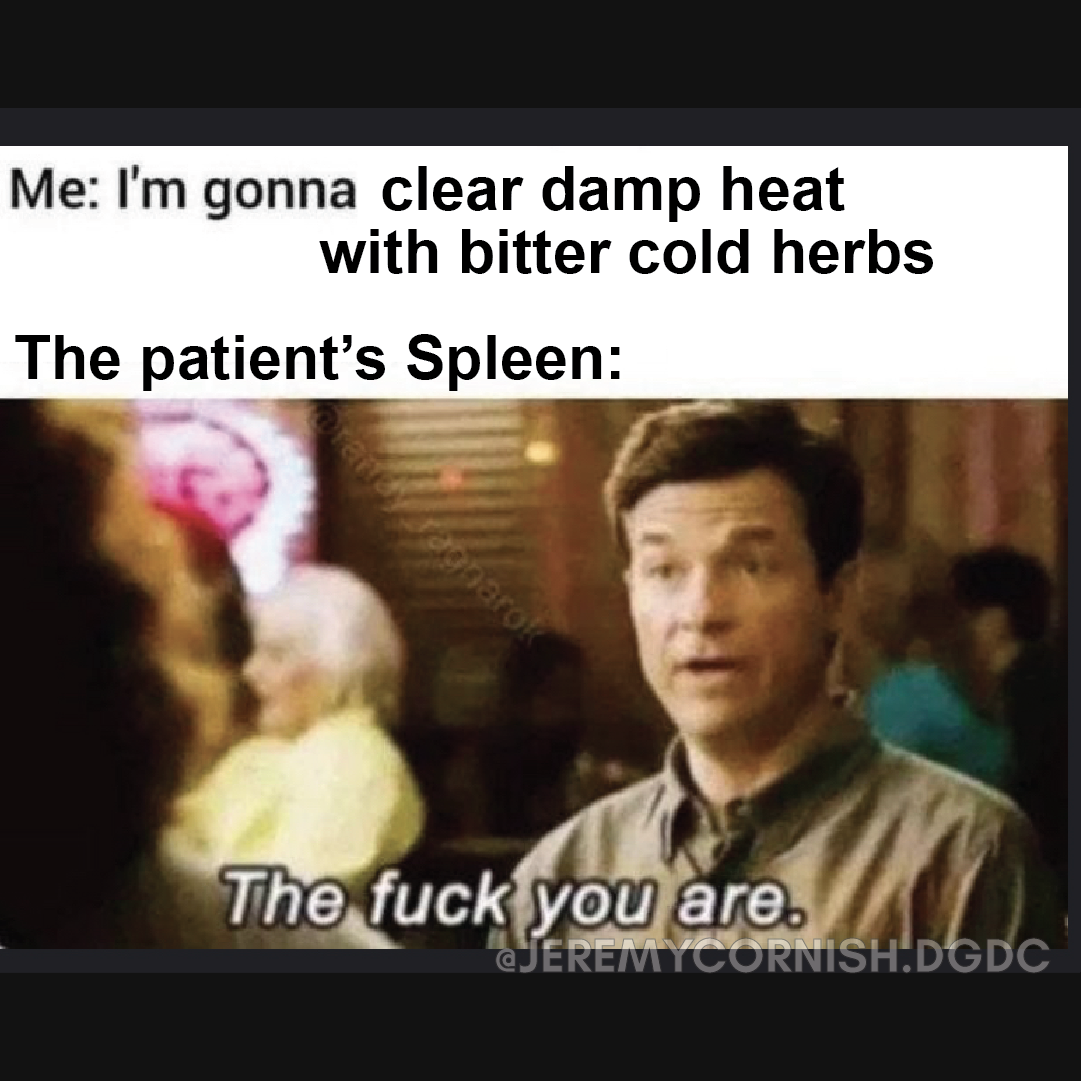
When it comes to treating dampness, we have multiple treatment principles (herbal actions) from which to choose. This can get messy.
The language around treating dampness may seem vague and confusing with terms such as "drain dampness," "dry dampness," "transform dampness," "expel dampness," "resolve dampness," and even "thrust out dampness" all being thrown around under the general heading of treating pathological fluids.
The first step in clearing this up is exploring the stages and pathomechanism of Dampness creation.
Two major causes of Dampness are environmental exposure and food.
Since humans are a part of nature and impossible to fully separate from the environment, places that are damp, humid, moldy, foggy etc can allow Dampness to enter the body.
This isn't magical transference, more the reality that if we spend time in a wet area we become wet.
Also, damp places tend to breed pathogens that prefer damp places. Those pathogens then encounter the human body which is a moist place and they dive in.
We can also consider time of year. Traditionally the late summer is considered a time for external Dampness to be the Seasonal Qi that can affect the body, though this will depend on climate.
In modern times we can also look at toxin exposure from the environment as a vector for dampness creation. This is often a factor in hidden pathogen cases as we are exposed to microplastics, heavy metals and other industrial waste which then acts as a coral reef scaffold for opportunistic pathogens to build slimy biofilm nests upon.
In terms of diet, overconsumption of foods that are considered damp can strain the digestive system, weaken the Spleen and allow dampness to accumulate internally.
Even "healthy" diets full of raw vegetables can deplete the Spleen Yang, which leads to a weakened digestion and the production of dampness.
We can see dampness accumulating not only due to excessive eating, but also "normal" amounts of food but a lack of exercise and movement to balance out the intake.
In today's post we're looking less at External Wind Damp attacks and instead focusing on Dampness that's internally generated.
We can see a general progression of Dampness creation that looks something like this:
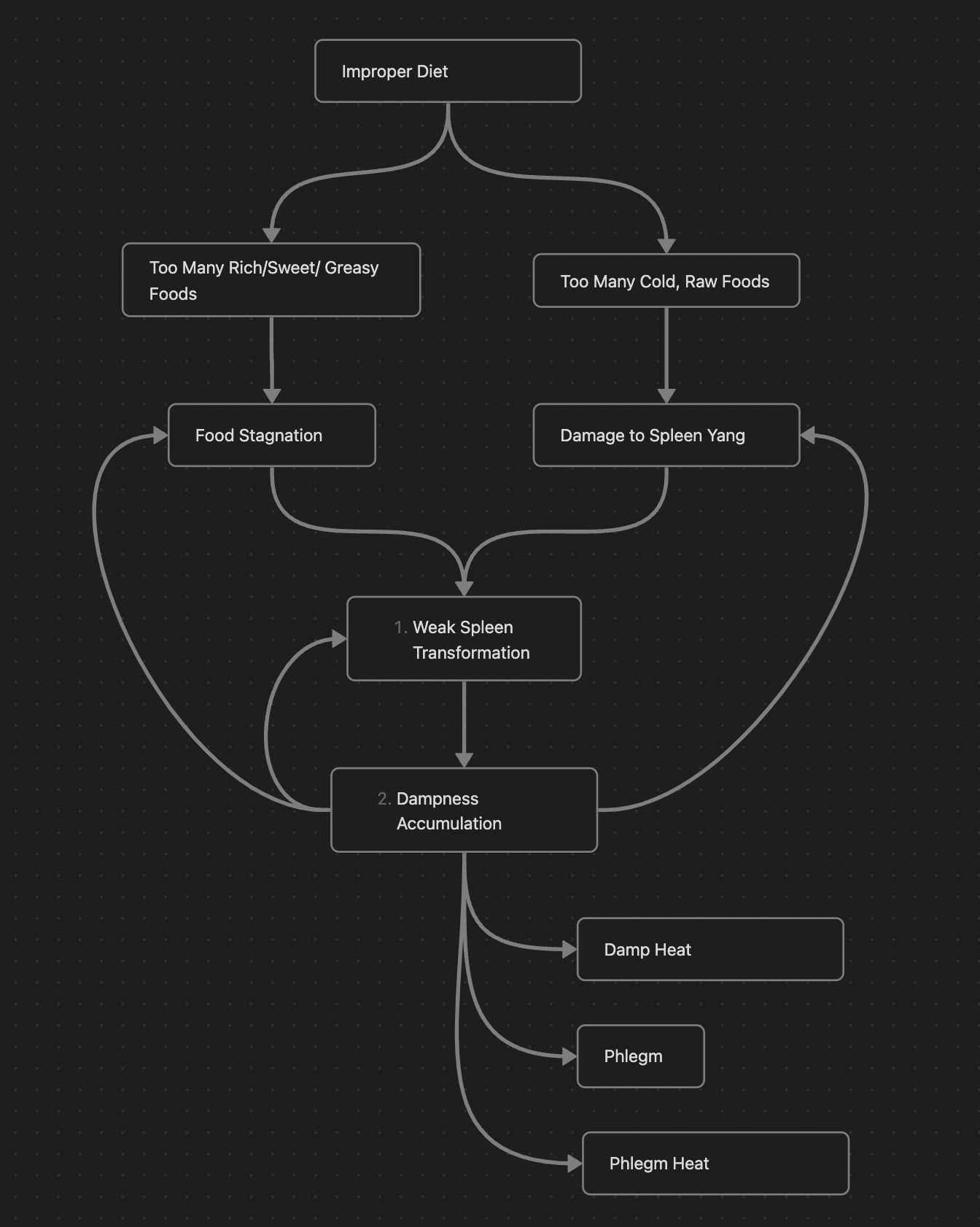
Let's break it down:
Herbs that Dry Dampness
This category tends to focus on established Dampness that has already accumulated in the body. They intervene towards the bottom (#2) of the flow chart. Likewise these herbs tend to be the basis for treating Phlegm.
Some representative herbs that Dry Dampness include:
- Ban Xia
- Chen Pi
- Bai Zhu
- Cang Zhu
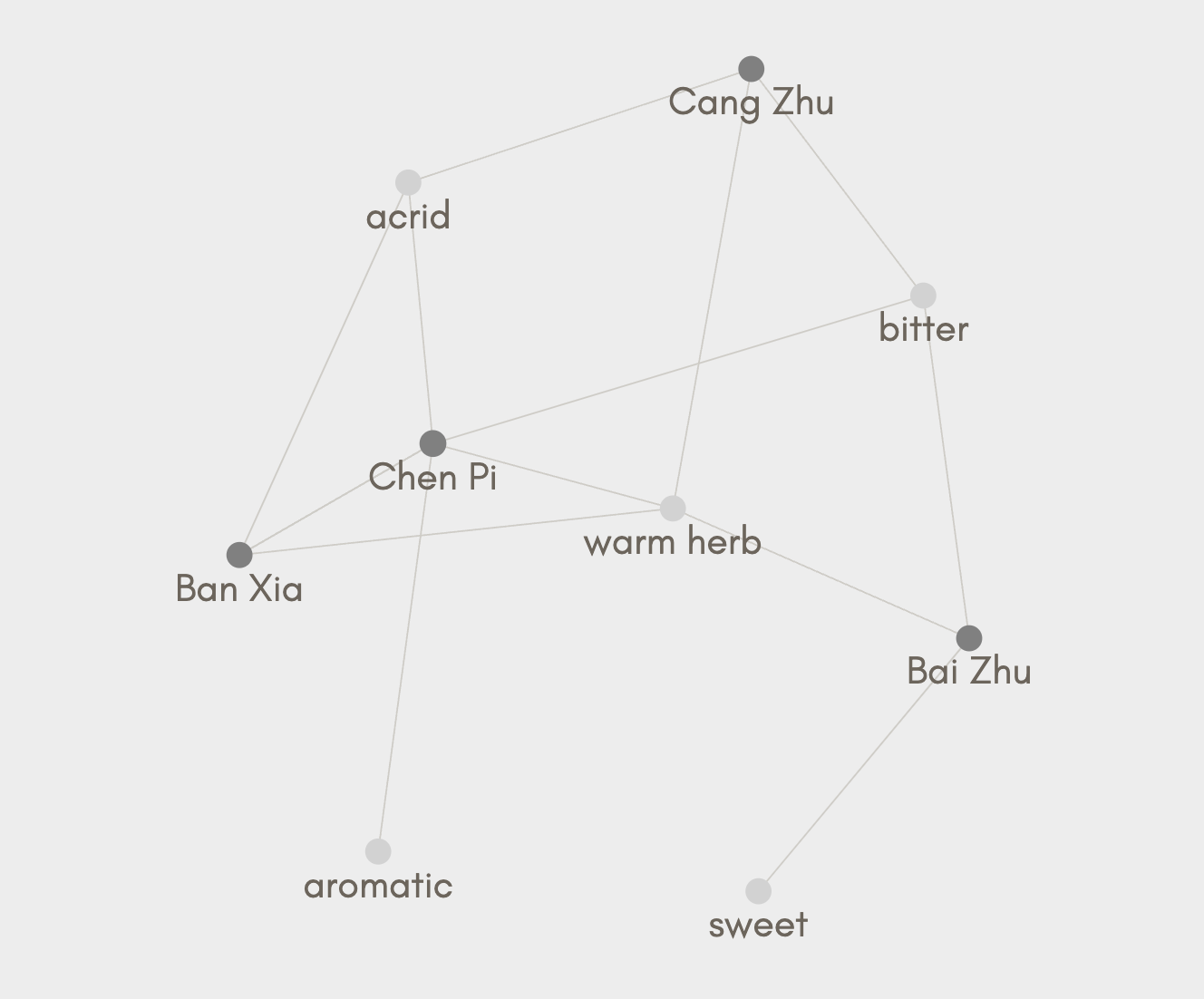
Formulas like Er Chen Tang or Er Chen Er Zhu Tang draw from this pool of herbs.
Herbs that dry dampness are relatively strong and care must be taken not to damage the Yin of the body.
When Dampness in the body is removed, it has to go somewhere. One vector is sweating (Release Exterior herbs). Another is the bowels. In cases of underlying Blood or Yin Deficiency with a tendency towards constipation, we must be careful that Herbs that Dry Dampness do not dry too much and cause constipation.
Herbs that Drain Dampness
Like the previous category, these herbs work to remove established Dampness Accumulation (#2 in the flow chart) though there are some distinctions.
This category of herbs tends to utilize the Kidney system to drain excess fluids via the urine. Many of the herbs have a diuretic effect.
These herbs tend to be more on the mild side in terms of flavor and temperature.
They also tend to be more gentle than the Dry Dampness herbs above.
Some representative herbs that Drain Dampness include:
- Fu Ling
- Yi Yi Ren
- Ze Xie
- Dong Gua Zi
- Bi Xie
- Yin Chen
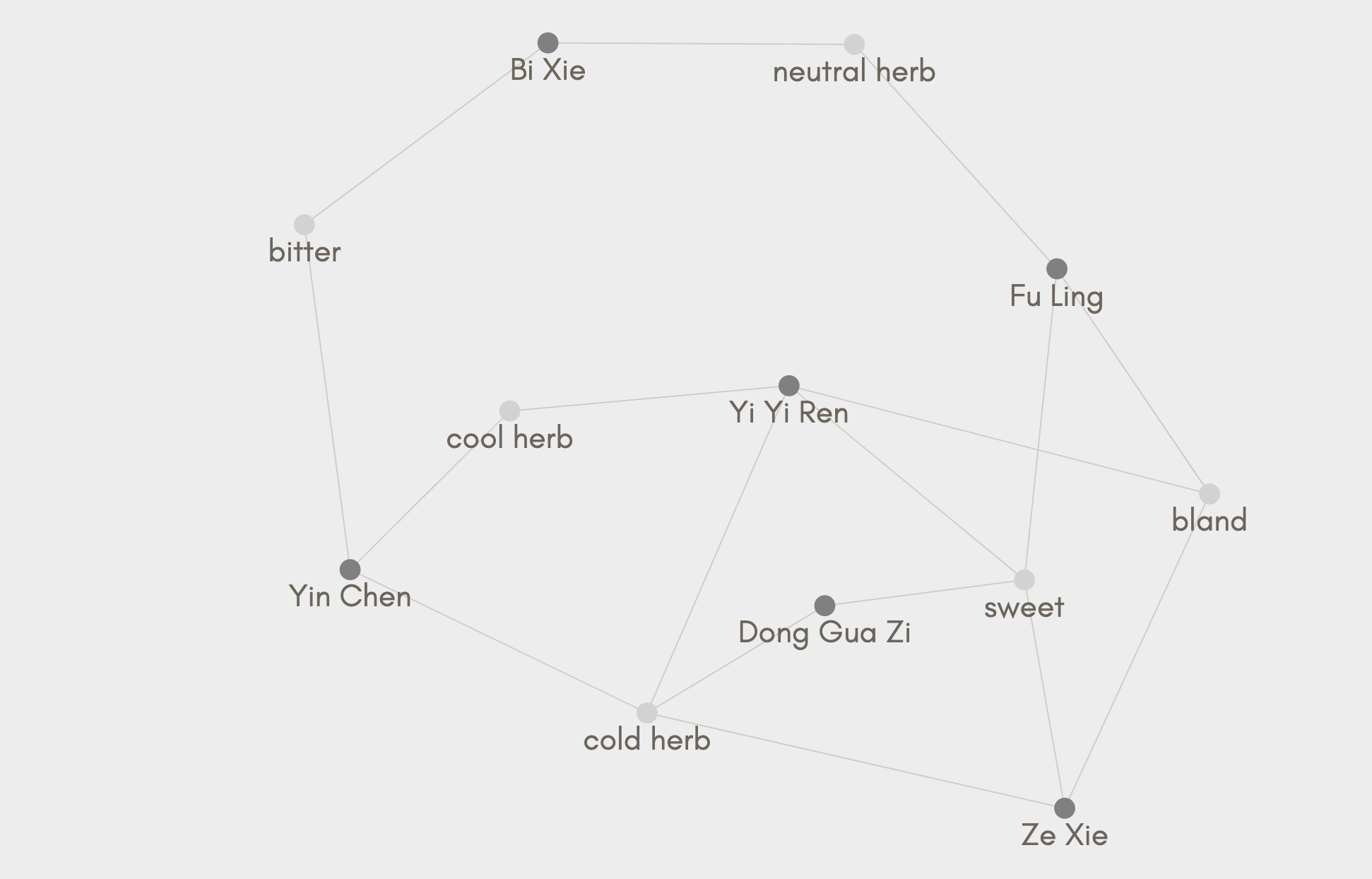
Formulas like Wu Ling San, Ling Gui Zhi Gan Tang and even Zhen Wu Tang draw from this treatment principle.
Herbs that Transform Dampness
These herbs tend to work further upstream (#1 on the flow chart) and help the Spleen in its transformation function.
These herbs tend to have an aromatic nature, and an ability to move stagnant Qi.
Many of these herbs are relatively low amplitude and even used as culinary seasonings, however some can be quite strong and potentially drying.
When dampness at this level is transformed we may see an increase in bowel activity, or it simply may manifest as a more efficient Spleen that doesn't generate as much dampness in the first place rather than a massive clearing out of pathological fluids.
This is also why we can use these types of herbs alongside a Yin nourishing formula to help the Spleen better absorb the rich tonics without causing Qi Stagnation or Dampness. An example would be adding Sha Ren to Liu Wei Di Huang Wan.
Some representative herbs that aromatically transform dampness include:
- Bai Dou Kou
- Cang Zhu
- Hou Po
- Cao Dou Kou
- Sha Ren
- Huo Xiang
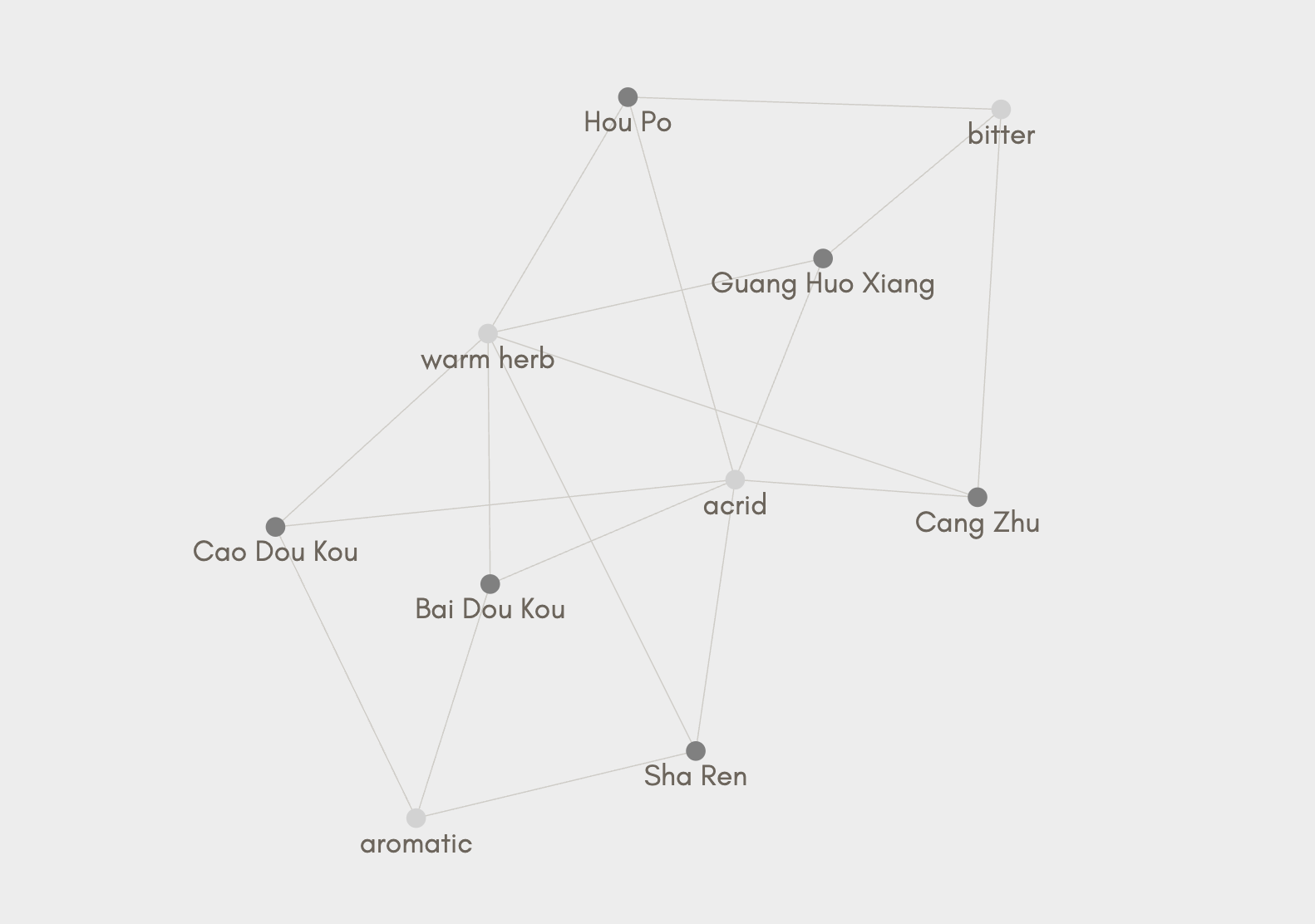
Formulas like San Ren Tang, Huo Xiang Zheng Qi Tang, Xiang Sha Liu Jun Zi Tang and even Qian Yang Dan utilize herbs that draw from this treatment principle.
Clear Heat and Dry Dampness
In some cases Dampness can give rise to Heat and become Damp Heat.
The herbs that Clear Heat and Dry Dampness are meant to be helpful in these situations, however since these tend to be bitter, cold herbs they can damage the Spleen. Which can lead to a paradoxical response of more Damp Heat.
We can see on the flowchart above how Damp Heat is downstream of a weakened Spleen's transformation function.
If we use too many bitter cold herbs we run the risk of thinking we're treating a branch manifestation (damp heat) but causing damage upstream that can simply perpetuate the cycle.
Instead we can look upstream and use more gentle, higher leverage formulas like San Ren Tang for example. In many cases the damp heat patients can get better with more graceful Transform Dampness approaches.
Some representative herbs that Clear Heat and Dry Dampness include:
- Huang Qin
- Huang Lian
- Huang Bai
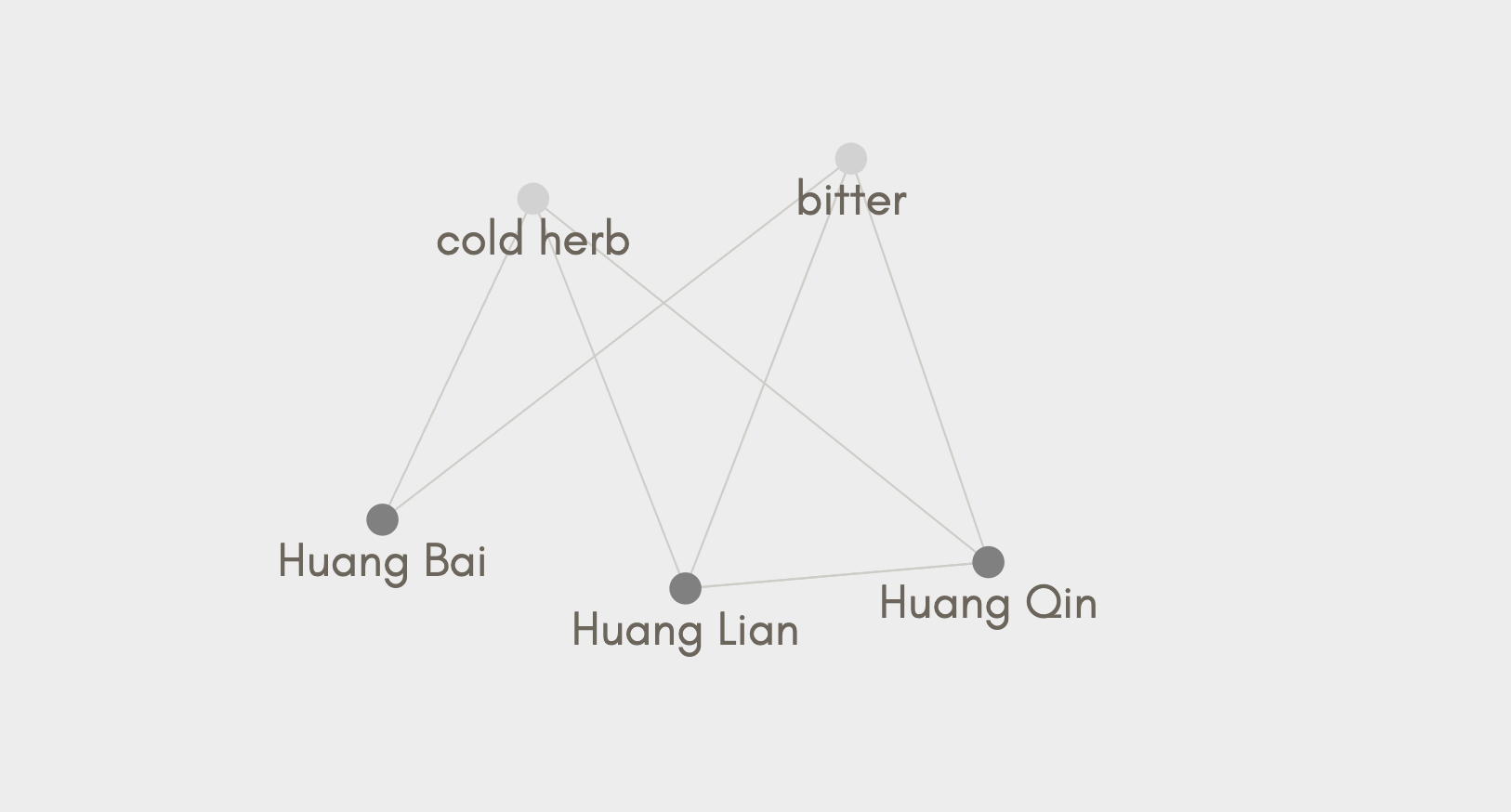
Formulas like Huang Lian Jie Du Tang, Er Miao San, and San Huang San Poultice make use of herbs from this category.
In some cases bitter cold herbs from this category are used as a small part of a larger more balanced formula. We see this with the inclusion of Huang Qin in Xiao Chai Hu Tang.
A deeper understanding of these distinct treatment principles will help you get better results for your patients with less risk of adverse responses.
Hope that helps.
Jeremy.

